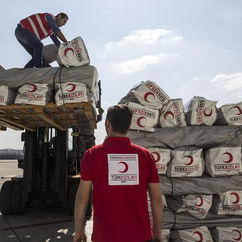
SECURITY MANAGEMENT & PLANNING
The dangers of humanitarian aid and international incident response work are highlighted daily on many aid websites and bulletins. It is therefore important that our Team Leaders and Managers understand the potential threats, and have structures and processes in place when making decisions to mitigate them.
AIM
To discuss approaches to safety and security strategy, and to understand how to prepare for any outcome.
KEY DEFINITIONS
Safety – “Freedom from risk or harm as a result of unintentional acts” (accidents, natural phenomenon or illness)
Security – “Freedom from risk or harm resulting from violence or other intentional acts”
Scenario Planning – “Rehearsal about how a situation may evolve in the future”
COURSE OVERVIEW STATEMENT
The course is 30 hours, includes evening exercises and takes place mainly on an outdoor training area. Candidates therefore need to be physically fit and robust. The workshops include approaches to security and safety, risk, threat and vulnerabilities, assessment on previous experiences and future possible tasking as well as the development of a safety and security plan from familiar and current world scenarios.
The bulk of the second day will involve short lesson briefings then scenario-based exercises, rehearsing team leaders in likely situations and challenges, for example, convoy procedures, effective communications procedures including incident reporting, major incident procedures, such as first aid and fire scenarios, culminating in hostage mitigation training.
The course allows time for students to practice the skills they already have and to implement new ones. An early evening scenario – a recce and convoy of aid to a distribution point – will challenge and stretch students within realistic operational scenarios (with the odd twist along the way).






